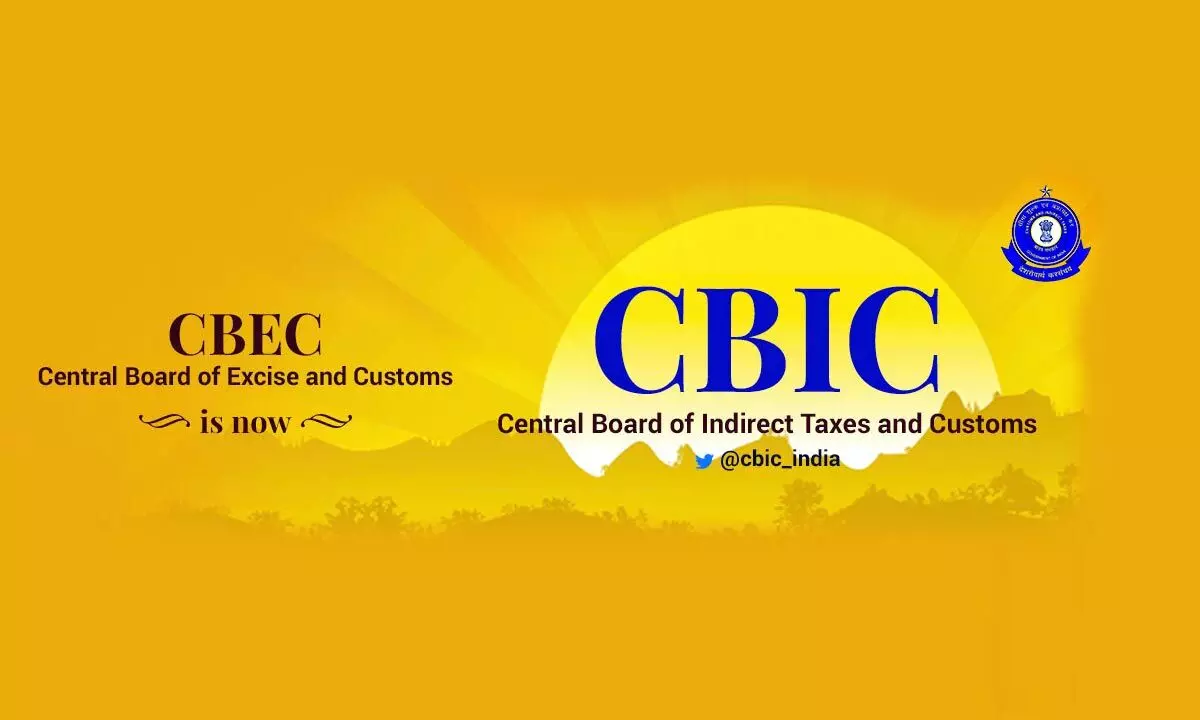CBIC declares all-out ‘war’ against fake registrations
Unscrupulous exploitation of existing loopholes depriving exchequer of millions in revenue
image for illustrative purpose

This special drive, launched on May 16 will be in operation till July 15. Based on detailed data analytics and risk parameters, GSTN will identify such fraudulent GSTINs for State and Central Tax authorities. GSTN will share the details of such identified suspicious GSTINs, jurisdiction wise, with the concerned State/Central Tax administration for initiating a thorough verification drive
The Central Board of Indirect Taxes and Customs (CBIC) recently issued instructions for launching a country-wide special drive against fake registrations in order to detect suspicious registrations by verifying the genuineness of such registrations and promptly taking corrective and remedial action in real time in order to prevent availing fraudulent input tax credit by unscrupulous registrants. These guidelines have been issued for both the Centre and States so as to ensure uniformity in implementation of the guidelines by the field formations.
Misuse of the identity of other persons to obtain fake or bogus registration under GST with an intention to defraud the government exchequer has been a matter of great concern to the government. Such registrations continue to fraudulently pass on input tax credit to crooked recipients by issuing invoices without any underlying supply of goods or services.
It has been observed that forged documents, such as fake electricity bills, property tax receipts, rental agreements and Aadhaar and PAN of gullible poor people are used as proof for principal place of business in order to obtain GST registration for fraudulently availing input tax credit. Such practices led the government to launch this special drive to both detecting fake registrations, and streamlining the system.
This special drive, launched on May 16 will be in operation till July 15. Based on detailed data analytics and risk parameters, GSTN will identify such fraudulent GSTINs for State and Central Tax authorities. GSTN will share the details of such identified suspicious GSTINs, jurisdiction wise, with the concerned State/Central Tax administration for initiating a thorough verification drive.
Successful implementation of the special drive would require close coordination among the State Tax administrations and between State and Central tax administrations. For this purpose, a nodal officer
shall be appointed immediately by each CGST Zone and State to ensure a seamless flow of data and for coordination with GSTN, DGARM and other Tax Administrations.
The Nodal officer will ensure that the data received from GSTN/DGARM/other tax administrations is made available to the concerned jurisdictional formation within two days. The nodal officer shall also ensure that cooperation, if any required by other jurisdictions under his control, is provided promptly.
On receipt of data from GSTN/DGARM through the nodal officer, a time-bound exercise of verification of the suspicious GSTINs shall be undertaken by the concerned jurisdictional tax officers. On finding that the taxpayer is non-existent and fictitious, then the tax officer may immediately initiate action for suspension and cancellation of the registration of the said taxpayer in accordance with the provisions of Section 29 of CGST Act, read with the rules thereof.
Further, the matter may also be immediately examined for blocking of input tax credit in Electronic Credit Ledger as per the provisions of Rule 86A of CGST Rules. Additionally, the details of
the recipients to whom the input tax credit has been passed by such non-existing taxpayer may be identified through the details furnished in FORM GSTR-1 by the said taxpayer. Where the recipient GSTIN pertains to the jurisdiction of the said tax authority itself, suitable action will be initiated for demand and recovery of the input tax credit wrongly availed by such recipient on the basis of invoice
issued by the said non-existing supplier, without underlying supply of goods or services or both.
In cases, where the recipient GSTIN pertains to a different tax jurisdiction, the details of the case
along with the relevant documents/evidence will be sent to the concerned tax authority, as early as possible through the nodal officer. Action may also be taken to identify the masterminds/beneficiaries behind such fake GSTIN for further action, wherever required, and also for recovery of government dues and/or provisional attachment of property/bank accounts, as per the provisions of Section 83 of CGST Act. Further, during the investigation or verification, if any linked suspicious GSTIN is detected, similar action may be initiated in respect of the same. On conclusion of the drive, GSTIN-wise feedback on the result of verification of the shared suspicious GSTINs, will be provided by the field formations to GSTN/ DGARM.
A National Coordination Committee headed by member [GST], CBIC, including Principal Chief Commissioners/Chief Commissioners Delhi and Bhopal CGST Zones and Chief Commissioners/Commissioners of State Tax of Gujarat, West Bengal and Telangana shall monitor the progress of this special drive. National Coordination Committee will meet periodically for this purpose. The Committee will also be assisted by GSTN and Principal Commissioner, GST Policy Wing, CBIC.
This step of the government will lead to discovery of the remaining fake registrations thereby putting an end to the Input Tax Credit Frauds, which have caused unfathomable loss of revenue in the last five years. This drive is likely to augment collection of Goods and Services Tax in the coming months.
(The writer is a former Principal Chief General Manager of GST in Mumbai)

